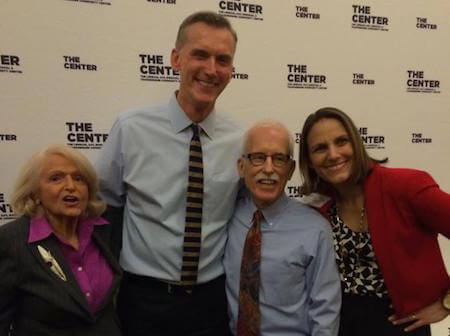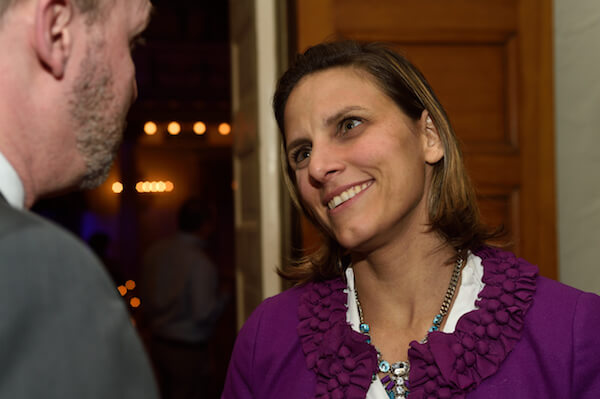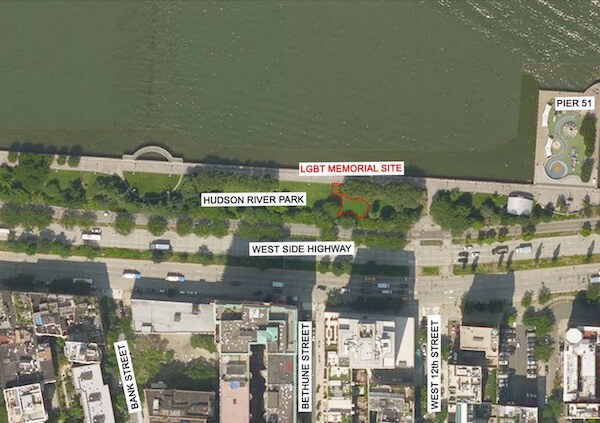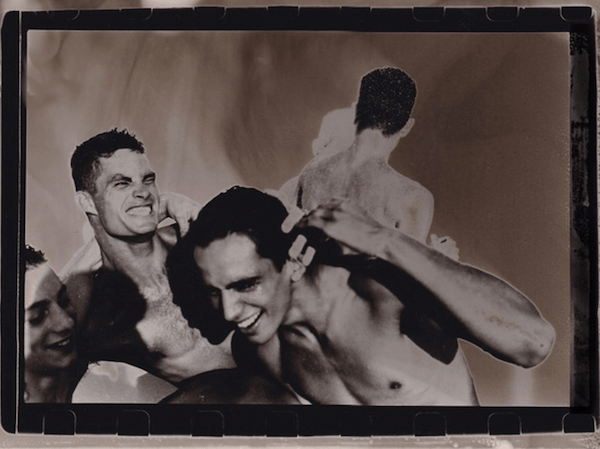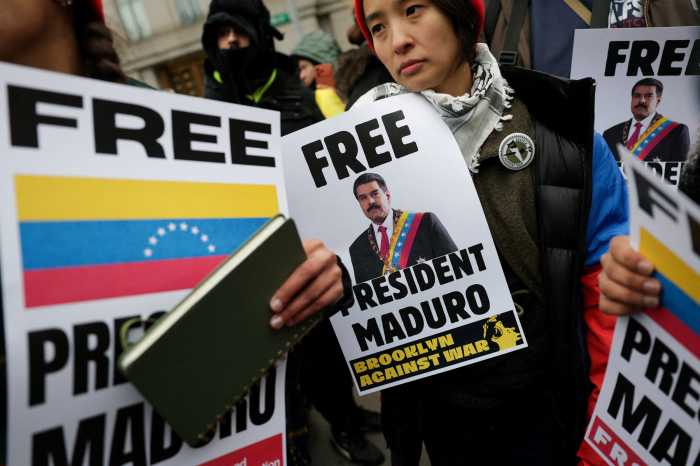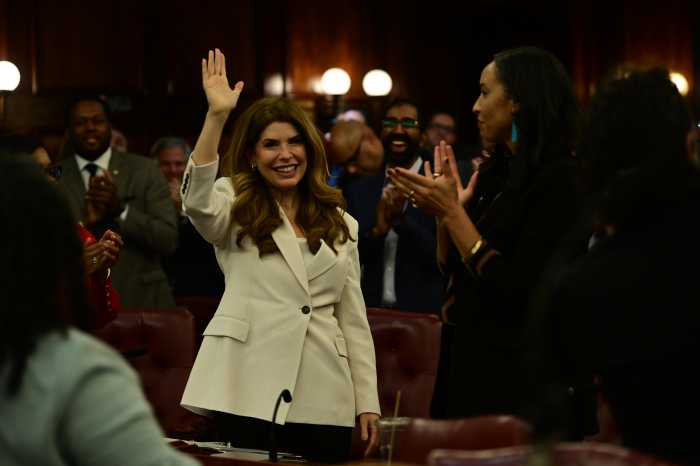Most every morning throughout the 1980s and ‘90s, he walked into the very epicenter of the AIDS epidemic in the heart of Greenwich Village. He was the head gardener of the many bulletin boards where a Help Wanted notice for a poodle stylist might jockey for position with a call for submissions to a new queer anthology or the business card of a lesbian comic. Over 32 years, Robert Woodworth had a front row seat, but was also a principal actor in the saga that is New York’s LGBT Community Center –– alongside people from Keith Haring, Larry Kramer, and Richard Burns through to Edie Windsor, Laverne Cox, and Glennda Testone.
He oversaw two major building renovations, and over five mayoral administrations he was the pater familias of the dizzying array of groups that have called the Center home. He was the first employee, a consultant hired in 1983 as negotiations were finalized to buy the old Food and Maritime Trades High School on West 13th Street from the city for $1.5 million in order to found what would initially be called the Lesbian and Gay Community Services Center. Woodworth had half a dozen different titles and a dizzying array of responsibilities, but somehow never lost his courteous, upbeat manner and his passion for the work of community-building.
“Let’s just not delude ourselves that it was easy,” he noted wryly when meeting with Gay City News on one of his final days at the end of December before commencing his retirement.
Robert Woodworth retires after 32 years in key stewardship role at LGBT Community Center
Having turned 70 in November, Woodworth, with his white hair, a trim white mustache, and black framed glasses, decided that after more than three decades the time had come to step aside.
Although there have been many longtime staff members, dedicated volunteers, and people who’ve come to the Center almost every day for years, even decades, no one can rival Woodworth’s sheer length of service at what has become an institution central to the LGBT community in New York and nationally. He’s been involved in the most intimate fashion in the details that created the Center as a model worldwide, impacting the lives of untold numbers of people.
Of the Center he said, “The impact is completely unmeasurable. It can’t ultimately be written down or quantified, but is emotional, found in terms of how someone feels about what has happened for them here.”
Woodworth speaks with a depth of intelligence and experience that can only be called wisdom about the connection between individual lives and bricks and mortar.
“Infrastructure matters,” he said. “It’s the little things that happen every day that matter. Greeting someone at the door or getting the goddamn paperwork done.”
When asked to point to a symbol of the Center’s importance, he said bluntly, “There are condoms at the front desk.”
Then after reflection, “There are people who come here because they have nowhere else to go, and it’s okay for them to be here and they know it and we know it.”
Woodworth is originally from Farmington, Connecticut, went to Amherst College, and served in the US Army as a first lieutenant.
“After being commissioned out of Officer Candidate School at Fort Benning, Georgia, I was a training officer in Kentucky,” he recalled. “Then I received special training in Vietnamese language and culture and was assigned to a mobile advisory team in the Mekong Delta.”
Woodworth finished his service in 1971 and eventually made his way to New York, hoping to secure a spot in the art world, but would ultimately use his creative and organizational skills in the service of a community undergoing massive challenges and changes.
And his life, both personal and professional, would intersect with history. After Larry Kramer, at a speaking engagement at the Center, called for an organized response from the gay community to the AIDS epidemic, it was Woodworth who dedicated the meeting space in honor of the founding of ACT UP, which still meets at the Center.
The New York Times, which only began to use the word “gay” in 1987 and routinely changed the word “lover” to “longtime companion” in obituaries, altered that policy in 1996 after advocacy from the Center in the wake of the death of Woodworth’s lover, Noli Villanueva.
Robert was a passionate advocate for an AIDS Memorial in Greenwich Village, telling Next Magazine in 2012, “We have to put something in the physical environment that will remind people of it. It’s time to do that.” A video clip of him discussing the issue can be found on the website of the group that succeeded in winning space for a memorial in a newly created park where Seventh Avenue South meets Greenwich Avenue and West 12th Street (nycaidsmemorial.org/2012/robert-woodworth).
The phrase that comes to mind to encompass all Woodworth’s efforts at the Center is “making space.” Both literal space –– for the more than 300 groups that meet at the Center 365 days a year and hold more than 12,000 meetings annually –– but also symbolically, in welcoming and affirming new and changing ways in which the community and its members see and define themselves.
“Robert’s dedication to our community –– and the Center in particular –– is unmatched,” noted Center executive director Glennda Testone.” Perhaps it would surprise people to know that Robert talks as much about the future as he does the past. His hopes for a Center filled with art, culture, and activism are top of mind for today’s Center leadership.”
As for himself, post-retirement, Woodworth said he plans to “devote more time to art-making and continue volunteering with the Rainbow Book Fair and Community Board Number 2.” He told Gay City New he’s been experimenting with pen and ink wash drawings, recently having completed dozens. Unlike so many artists paralyzed by a rigid focus on the final product, Woodworth has given himself permission to be in process, to enjoy the work of growing and developing his own style –– in something of a more personal parallel to the creative process in his life’s work on behalf of the LGBT community.
“You can take the man out of the Center,” he said, “but you can’t take the Center out of the man.”
WITHIN THESE WALLS Around 1990, Robert Woodworth crafted an early Code of Conduct for what was then called then called the Lesbian and Gay Community Services Center:
Within these walls, we expect to be treated with consideration and kindness. We expect our persons, our property, and our opinions to be respected. We expect to be free from violence and the threat of violence. We expect our disagreements to be resolved with sensitivity and good will.
In return, we are expected to be considerate and kind. To respect the persons, property, and opinions of others. To behave nonviolently. To display sensitivity and good will in resolving disagreements.
Within these walls, we hold ourselves to a higher standard of conduct and social interaction. We strive to make of this place a haven free of the ills and abuses we find outside it.

